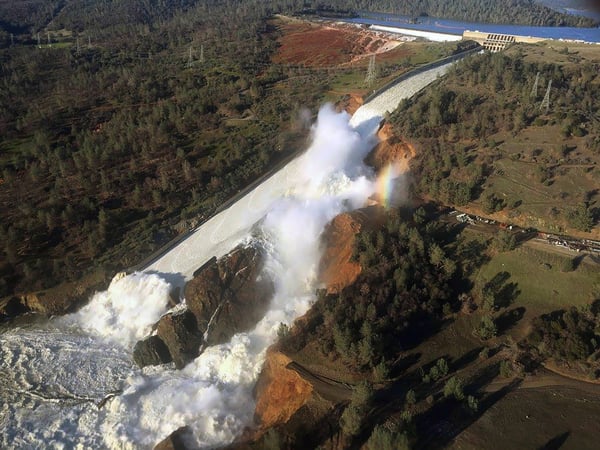
Early in 2017, California’s five-year drought came to an end thanks to heavy rains and melting snowpack in the Sierras that challenged dams around the state.
The rising waters caused damage in low-lying orchards, including walnut orchards, according to Janine Hasey, a tree crop farm advisor and county director for the UC Cooperative Extension Sutter-Yuba Counties.
At the Tree & Vine Expo in Turlock, Hasey told growers a tale they knew well, and shared tips for how to save as many trees as possible from lingering ill effects of flooded roots.
First, she ran down the stats of how bad the flooding was:
- Unprecedented duration of high and fluctuating riverwaters
- Lake Tahoe snowpack at 217% of normal in March
- Sacramento River near flood levels from January through February
- Water seeped from Sacramento River levee into nearby orchards from January to May
- San Joaquin County saw its third-wettest snowpack, at 196% of normal levels
“Seepage was one of the main problems we had, water going under the levees and into the orchards,” Hasey said. “We actually had water in orchards from February through May.”
What did that mean for walnut and fruit orchards?
There were two key types of damage in areas where there was standing water for extended periods of time: first, waterlogging of roots that starved them of oxygen, and secondly, Phytophthora, fungus that spreads from surface water to infect upper parts of trees, including trunks and limbs.
The damage poses tough questions for growers, Hasey said.
“Determining when to start irrigating flooded orchards is very difficult,” she said. “It takes a long time to grow new roots and get their function back. You have to look at shorter, frequent irrigations and be very careful about monitoring tree water status...we also said do not fertilize the trees. You’ve got all this water, so it’s just going to be wasted, or prevent new root growth.”
One of the biggest decisions for flood-damaged trees is whether to perform topping, removing upper sections of trees that aren’t recovering as strongly, according to Hasey.
“For those trees that might recover, it would be best to actually top: Trees with new shoot growth on the upper trunk and lower limbs. They have enough vigor. You have to take the top area off that has some new growth but not enough,” Hasey said. “November, now, is the time to top, otherwise you have to wait until spring to do that...to find a good time to prune other than summer is difficult. Research shows less infection (by botryosphaeria infection or bot canker) when pruning in November rather than pruning in February.”
For more information and advice, growers can contact Hasey at the UC Cooperative.
